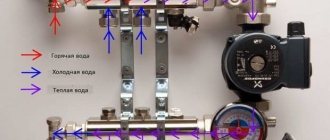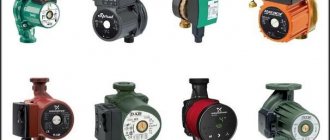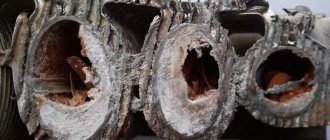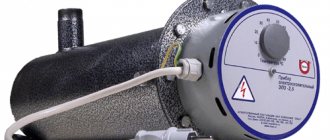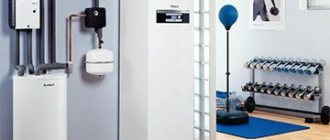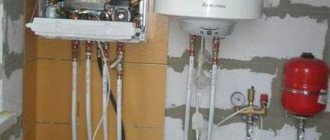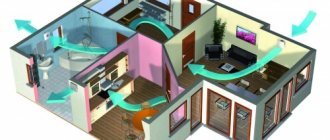Ideas on how to save money, but at the same time have all the benefits of civilization on a personal plot without a centralized electricity and water supply, do not give “homemade” people peace. But often, when it comes to engineering equipment running on “green” energy, developers brush it off. They say that all this is not suitable for our latitudes and harsh natural conditions with short summers, frequent rains and a small number of truly hot days. However, the experience of FORUMHOUSE users suggests the opposite.
From this article you will learn:
- How to assemble an inexpensive solar collector with your own hands.
- Is there any economic benefit from a solar collector installed in the Moscow region?
The principle of operation of the solar collector
It's very simple. The panels accumulate solar heat and transfer it to the coolant. It circulates through a coil in the storage tank and releases heat to the water, which can be used for any need. The entire process is controlled by a controller, which starts the pump group if the heat exchanger reaches the required temperature.
How does a solar collector work in general?
. The entire system consists of the following elements:
- the panels themselves in the required quantity according to calculations,
- control controller (including sensors),
- pump group,
- storage capacity (usually a tank of 300-3000 liters),
- mounting elements, pipes and fittings.
It is impossible to remove any element from this scheme; it will not work. The only exception is collectors with flow-through heaters. More on them a little later.
Performance you can count on
Before installing such equipment, it is worth considering such a factor as payback. After all, a bad entrepreneur is one who does not make a profit from his investments. The payback of a collector depends directly on its productivity.
Absorber, the most important part of the system
The part of the solar collector that receives, accumulates and transfers heat to the coolant is called an absorber. The efficiency of the entire system depends on this element.
This element is made of copper, aluminum or glass, followed by coating. The efficiency of the absorber depends more on the coating than on the material from which it is made. Below, in the photo, you can see what kind of coatings there are and how effectively they can absorb heat.
The description of the system indicates the maximum possible absorption of solar energy incident on the absorber. "α" is the maximum possible absorption percentage. "ε" is the percentage of reflected heat.
By type of structure
Absorbers also differ in the type of device; now there are only two types:
Feather
- are arranged as follows. The plates connect tubes with coolant to each other. The tubes themselves can be interconnected into one system in several ways. This is a simple type of absorber that you can make yourself.
Cylindrical
— in this case, the coating is applied to the glass surface of the flask and used in vacuum manifolds. Thanks to this device, the heat is concentrated more precisely in the center of the tube where the heat extractor, or rod, is located. This system operates with higher efficiency than the pen system.
Advantages and disadvantages
Like any technical device, the solar collector has its pros and cons, both in terms of the possibility of use and operation, and in terms of other parameters and indicators. Depending on the design of the device, the pros and cons vary, so it is necessary to consider them separately from each other.
Flat solar collectors.
Advantages of use:
- When used in southern regions with warm climates, the best indicators in the price-performance ratio;
- During precipitation in the form of snow, they have the ability to self-clean;
- They have high efficiency when used in summer;
- Relatively low cost in comparison with analogues of other designs.
The disadvantages are:
- Significant heat losses caused by the design features of the device;
- Low efficiency when working in the autumn-spring period;
- Difficulty in transporting and installing finished products;
- The high windage of the structure creates a risk of damage to its elements during operation;
- Difficulty and labor-intensive repair work.
Vacuum solar collectors.
Advantages of use:
- When used in regions with cold and temperate climates, the best indicators in the price-performance ratio;
- Insignificant heat losses during operation, in comparison with analogues of other designs;
- Ability to work at low and negative ambient temperatures;
- Ability to work in low solar activity in the morning and evening hours, as well as in the absence of direct sunlight (cloudy weather);
- Easy and convenient installation, transportability of structures;
- Reliability during operation.
The disadvantages are:
- Relatively high cost;
- Strict installation requirements that determine the location of the collector in space in relation to the surface of the earth.
What types of solar collectors are there?
There are two types of such systems: flat and vacuum. But, at their core, their operating principles are similar. They use the sun's heat to heat water. They differ only in the device. Let's look at the operating principles of these types of solar systems in more detail.
Flat
This is the simplest and cheapest type of collector. It works as follows: The metal body, which is internally treated with a highly efficient feather absorber to absorb heat, contains copper tubes. A coolant (water or antifreeze) circulates through them, which absorbs heat. Next, this coolant passes through a heat exchanger in a storage tank, where it transfers heat directly to the water that we can use, for example, to heat a house.
The upper part of the system is covered with high-strength glass. All other sides of the body are insulated with insulation to reduce heat loss.
| Advantages | Flaws |
| Low cost panels | Low efficiency, approximately 20% lower than vacuum |
| Simple design | Large amount of heat loss through the body |
Because of their ease of manufacture, such systems are often made even with their own hands. You can purchase the necessary materials at construction stores.
Vacuum
These systems work a little differently, this is due to their design. The panel consists of double tubes. The outer tube plays a protective role. They are made of high-strength glass. The inner tube has a smaller diameter and is covered with an absorber that accumulates solar heat.
Flat model
Copper tubes are mounted in a special aluminum box. Thermal insulation protection is installed in the lower part. The upper surface of the structure is made of tempered glass and propylene glycol. It ensures the absorption of the sun's rays for subsequent conversion by the device into thermal energy. This is a budget option for equipment that works all year round.
Additional costs associated with operation
Using this does not imply any care or maintenance other than periodic cleaning of dirt and snow in winter (unless it thaws itself). However, there will be some associated costs:
- Repairs, everything that can be changed under warranty can be replaced by the manufacturer without any problems, it is important to buy an official dealer and have warranty documents.
- Electricity, very little of it is spent on the pump and controller. For the first one, you can install only 1 solar panel of 300 W and it will be quite enough (even without a battery system).
- Washing the coils will need to be done once every 5-7 years. It all depends on the quality of the water (if it is used as a coolant).
How to install a solar collector
You can install this system yourself. To do this, you need to understand the main principle of installation - maximum sunlight.
- We choose a place
. It should be on the sunny side. To do this, it is enough to observe for several days which place on the site the sun illuminates for as long as possible (you need to avoid getting into the shadows of trees or buildings). Select a starting point and an ending point, and direct the solar collector to the center of these points. This way we will get maximum coverage of thermal radiation. - Tilt angle
. This is an important stage of installation, on which its effectiveness depends. As a rule, such data is provided by the system manufacturer, but on average it is 45 degrees. It cannot be installed at a larger or smaller angle, as this will reduce the absorbing area. - We connect the rest of the equipment
. This is a pump group with a controller, a storage tank and connecting pipes. This is all connected according to the instructions. There is nothing complicated here, since the principle of the device is quite simple.
Detailed installation video
View all construction myths
Types of equipment
In southern sunny regions, the efficiency of use can reach 95%, although in northern regions the efficiency is significantly reduced. For those who are interested in what types of solar collectors there are, it is advisable to consider the main types of solar collectors.
A little about the use of systems in practice
I decided to add this section because actual usage data appeared. A good friend of mine installed it 3 years ago (Ukraine, Kiev region).
A solar system is used to heat a house of 100 sq. m and hot water for 6 people. Gas costs for heating and hot water amounted to 33,400 UAH
in year. It was decided to purchase a solar collector.
The kit includes 6 flat collectors and a storage tank of 1000 liters. Result:
- — 100%
for 6 “warm” months according to the DHW load (temperature 55 degrees), - — 50%
during 6 “cold” months according to the DHW load, - — 25%
for 6 “cold” months based on heating load in maintenance mode.
The total savings for the year amounted to UAH 11,300
(in terms of rubles, the amount must be multiplied by 2.2).
The whole system cost 94,000 UAH
. At this cost of gas, it will pay for itself in 8.4 years. Manufacturers provide a 15-year guarantee, so at least 7 years of net profit.
The efficiency of the system could be significantly increased by purchasing vacuum models. Also, low temperature heating systems, such as heated floors, which operate at a temperature of 30-40 degrees, will be more efficient.
